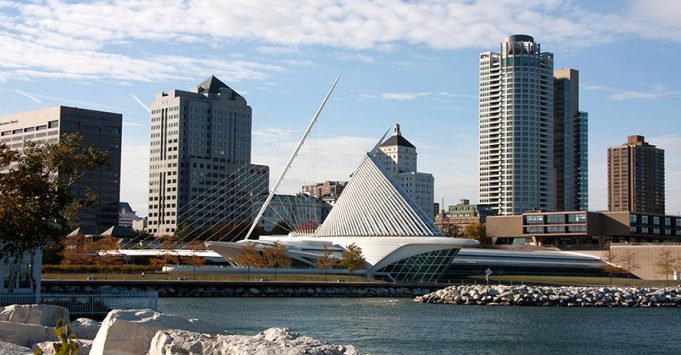Milwaukee is the tale of two cities.
In one city, a carefully crafted image of a city on a lake sells itself to tourists through TV shows like Laverne and Shirley. We’ve got the Bucks, Brewers and a beautiful downtown. In this city, the future is bright and the economy is strong. What this city lacks in diversity, it makes up for with sunshine and rainbows.
There’s just one problem. A ten-minute car ride away lies another city full of poverty and hopelessness. That’s the city where people look like me.
People keep asking me if the Sherman Park uprising harmed Milwaukee’s reputation. My answer is simple: Only if you don’t know the truth about Milwaukee. The truth is, Milwaukee is the most segregated city in America. With that come challenges. The number of our babies living in poverty has grown over the last decade, so whatever we are doing, it’s not working. Milwaukee’s black community rose up in August not just because of an officer-involved shooting, but because of the poverty, the incarceration and the hopelessness.
Earth to government: We can’t do the same again and again and expect a different result. Our people need meaningful help.
I was originally hopefully about Governor Walker’s proposed $4.5 million for economic development in Milwaukee. But it didn’t take long to wonder if the money would actually help.
Our community needs jobs, period. If we’re gonna throw $4.5 million at this problem, let’s make every penny count, right?
Wrong.
Here’s what is being proposed:
THE ISSUE: Deconstruction and Rehabilitation ($2 million)
THEIR PLAN: Word on the street is the City of Milwaukee plans to put most of the money out of the community and leaves no asset in the end. They plan to outsource the work of about 75% of this money to private contractors and only 25% will be divided by multiple Community-Based Organizations. Sadly, more than half of this $2 million is currently planned for deconstruction of abandoned homes, which leaves an empty lot with no asset to work with.
I PREFER:
1) Put all $2 million into rehabilitation of blighted properties using mostly CBO’s. We should create temporary jobs, trains workers in a skilled trade and creates a community investment, maximizing the impact of these funds. This increases home ownership, public access to these spaces and will increase economic investment in neighborhoods.
2) Partner with job training organizations to get Milwaukeeans from targeted neighborhoods on the job training.
3) Turn those rehabilitated properties over to community-based organizations to invest in the neighborhood.
4) We need to create alignment. The county is already doing the work to fight homelessness. Why not team up with them to use rehabilitated homes as transitional housing?
5) Partner with law enforcement by turning rehabilitated homes into Community Oriented Policing hubs in high crime neighborhoods like Racine did over a decade ago. That would drop violent crime and increase police-community relations.
THE ISSUE: Department of Workforce Development’s Wisconsin Fast Forward job training ($1 million)
THEIR PLAN: To focus this money on the Milwaukee Build Program to leverage their existing program.
I PREFER:
If we use the foreclosure money as I suggested, we can invest DWD’s money into training workers in the emerging urban agriculture industry. This could expand upon proven programs we’ve already seen work in our community, such as Growing Power, Walnut Way and Alice’s Garden.
THE ISSUE: Department of Children and Families’ Temporary Assistance for Needy Families – TANF ($1.5 million)
THEIR PLAN: This money is slated for “Transitional Jobs Program.” I love job training funding, but job readiness, training and connectors is what’s really needed.
MY PLAN: You heard the saying, catch a man a fish and he eats for a day, teach a man to fish and he eats for a lifetime? Well, that’s what we should do with this money. We should target these job readiness funds for urban agriculture to train in growing food. Over 23,000 people in Milwaukee live in a federally designated food desert without access to fresh fruits and vegetables at a neighborhood grocery store. Did you know America’s nationally recognized urban farmer, Will Allen, lives right here in Milwaukee? Forget temporary assistance. Imagine the kind of permanent assistance his quarter of a century of experience could do for Milwaukee.
We need to target our resources with data-driven strategies. The decisions on how to spend this money aren’t finalized yet. Stay tuned, because you can be sure I’ll keep talking about this. It’s too important not to.




























